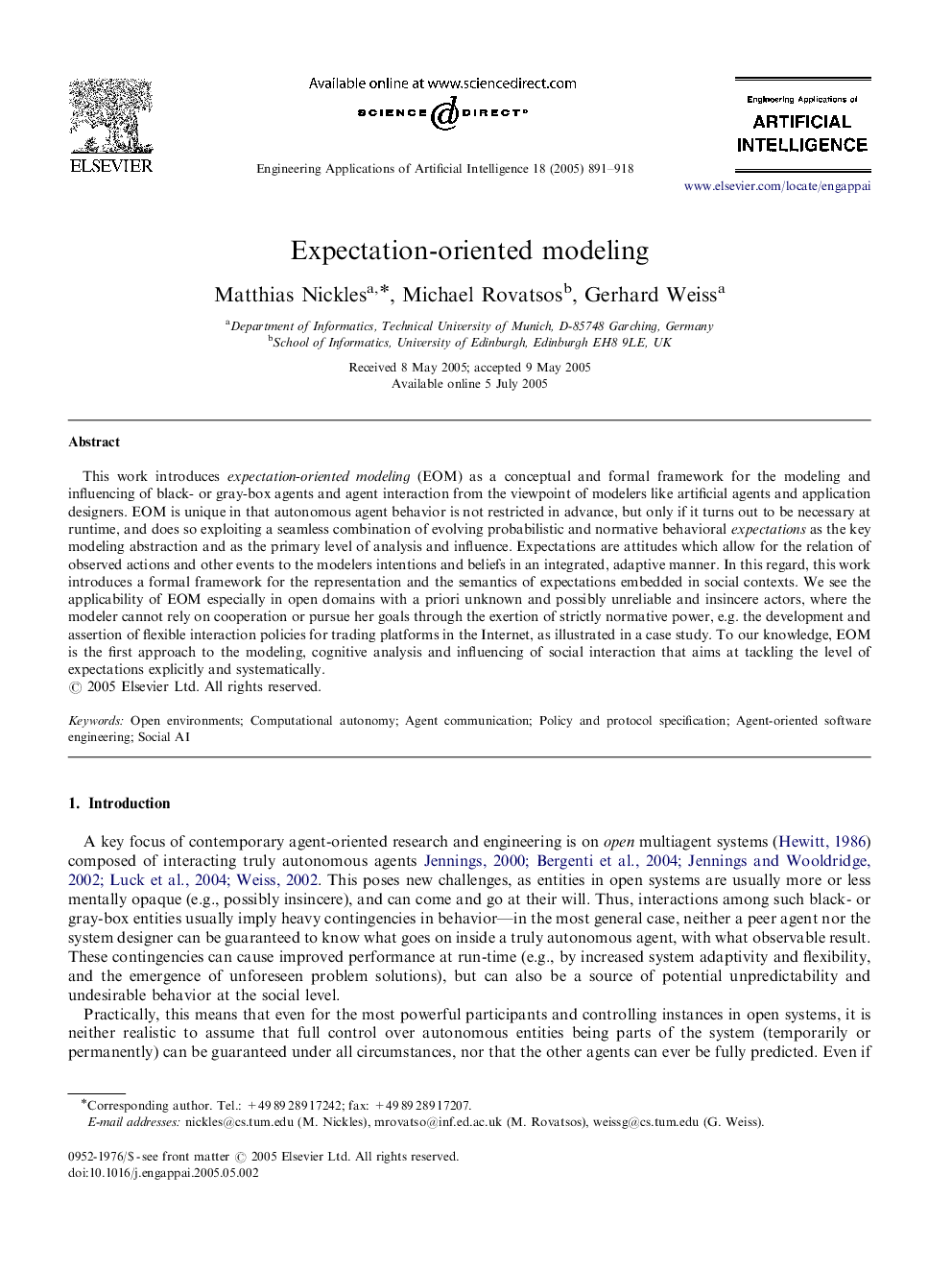| Article ID | Journal | Published Year | Pages | File Type |
|---|---|---|---|---|
| 9650501 | Engineering Applications of Artificial Intelligence | 2005 | 28 Pages |
Abstract
This work introduces expectation-oriented modeling (EOM) as a conceptual and formal framework for the modeling and influencing of black- or gray-box agents and agent interaction from the viewpoint of modelers like artificial agents and application designers. EOM is unique in that autonomous agent behavior is not restricted in advance, but only if it turns out to be necessary at runtime, and does so exploiting a seamless combination of evolving probabilistic and normative behavioral expectations as the key modeling abstraction and as the primary level of analysis and influence. Expectations are attitudes which allow for the relation of observed actions and other events to the modelers intentions and beliefs in an integrated, adaptive manner. In this regard, this work introduces a formal framework for the representation and the semantics of expectations embedded in social contexts. We see the applicability of EOM especially in open domains with a priori unknown and possibly unreliable and insincere actors, where the modeler cannot rely on cooperation or pursue her goals through the exertion of strictly normative power, e.g. the development and assertion of flexible interaction policies for trading platforms in the Internet, as illustrated in a case study. To our knowledge, EOM is the first approach to the modeling, cognitive analysis and influencing of social interaction that aims at tackling the level of expectations explicitly and systematically.
Related Topics
Physical Sciences and Engineering
Computer Science
Artificial Intelligence
Authors
Matthias Nickles, Michael Rovatsos, Gerhard Weiss,
